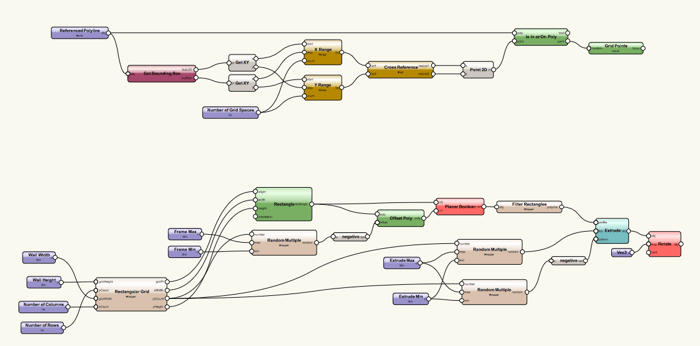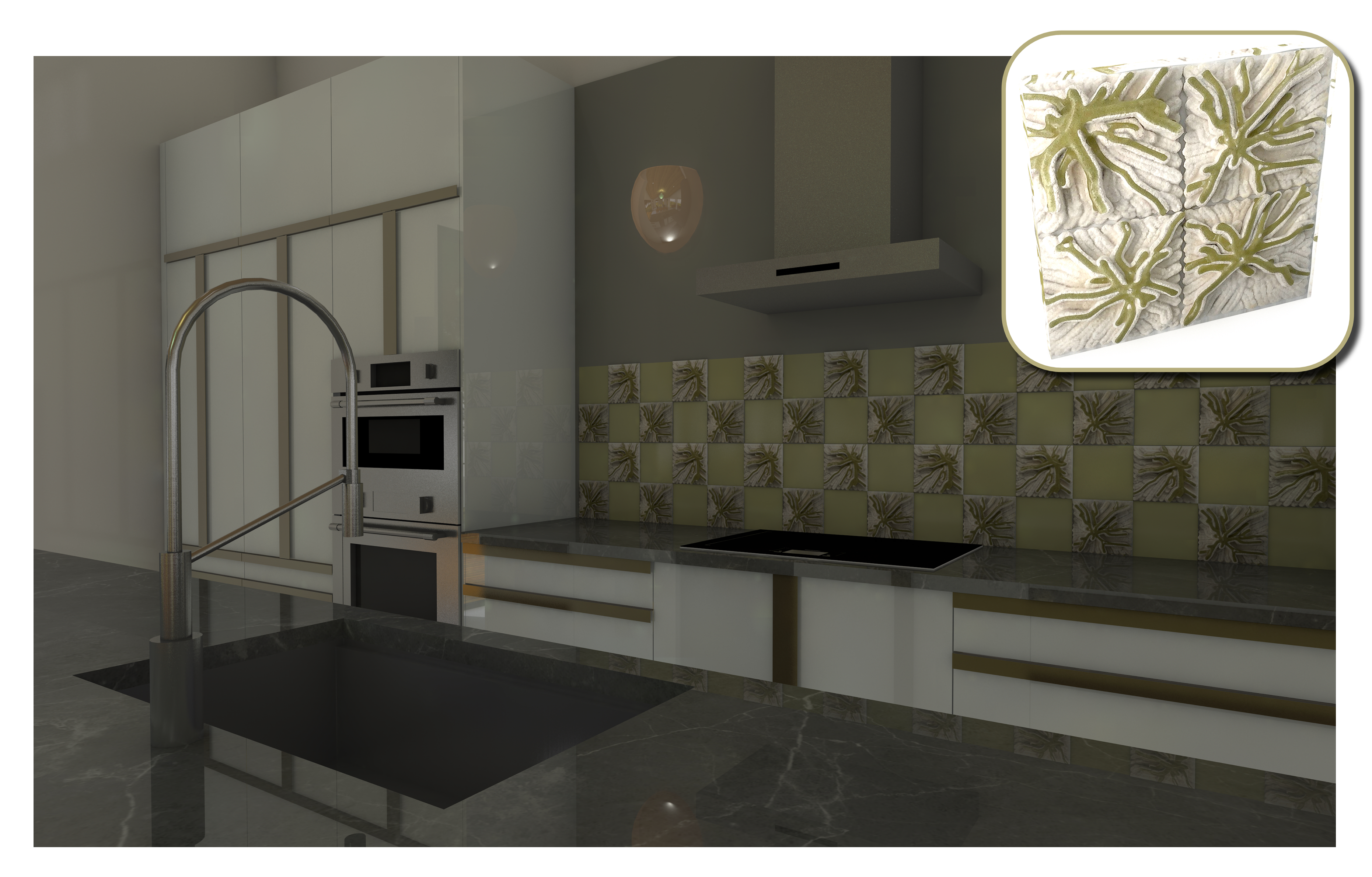Trying new materials and finishes can be a joy, especially if they’re helping meet your project’s sustainability needs.
In this post, we’ll look at how Mycelium and 3D printing can open the door to new design possibilities.
What’s Mycelium?
Created from a thin root-like fungus, Mycelium can be molded into any shape you desire, whether it be brick, insulation, or more custom elements like lamps or sculptures.
There are countless advantages to using Mycelium for your projects. It’s bio-degradable, lightweight, and in most applications, carbon-negative.
Mycelium is also naturally fire-resistant, making it a great addition to non-load-bearing surfaces in kitchens. And if you’re using Mycelium in a kitchen design, Mycelium can be water-resistant with the right finish.
For more on designing kitchens, check out our blog on the power of the Parametric Cabinet tool in Vectorworks 2024.
Experimenting with Mycelium & Design Technology
Design firms and manufacturers around the world have already started experimenting with Mycelium.
bioMatters, a research and design studio based in New York City and London, for example, is crafting tiles out of Mycelium and algae using 3D printing. Per designboom, the MYCO-ALGA are made using “computational algorithms, [and] the panels are digitally designed and then 3D printed, grown, and enriched with bio pigments to infuse natural hues.”
Using algorithms-aided design techniques (which can be taken advantage of in Vectorworks via the Marionette feature), you too can generate random patterns and representations of your sustainable materials, just like bioMatters’ sprawling, organic MYCO-ALGA tiles.
Think of algorithmic modeling like a recipe where the algorithm is the recipe itself. It takes the ingredients (the inputs), mixes them together based on the instructions (the manipulation), and gives you a final dish (the outputs). So, in a way, algorithmic modeling is like building a program recipe.

Marionette and algorithms-aided design aren’t the only ways you can experiment with sustainable design like bioMatters. Vectorworks can also assist with 3D printing.
You can take your 3D model from Vectorworks using any number of modeling techniques. Or, you can import 3D objects from elsewhere. Vectorworks can import .stl and .obj files, and once you’ve modeled your object, you can translate the file into a format your printer can decode.
For more on how to 3D print from a Vectorworks file, click the button below:
Design technology or even specifying the use of Mycelium in your designs boils down to one fundamental, exciting idea: exploration.
Design — and sustainability, for that matter — can be a fun journey of working with new technologies and materials to generate innovative solutions that improve the quality of the design and the impact it can have on the environment. Ultimately, by going on that journey and exploring the boundaries of sustainable design, you’re one step closer to designing without limits.

.svg)





